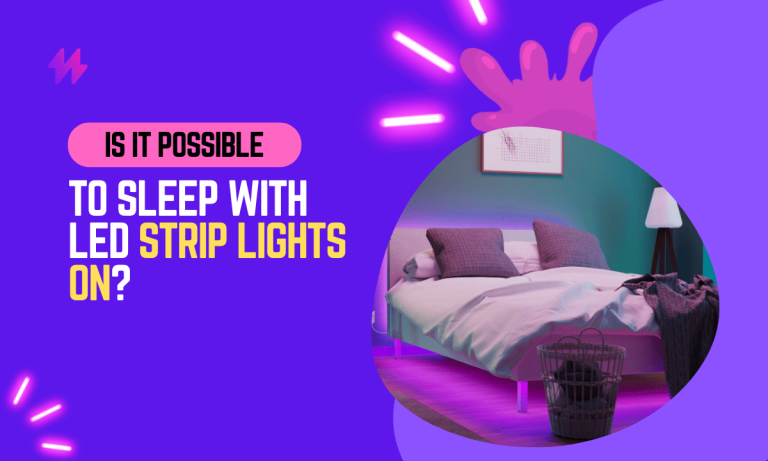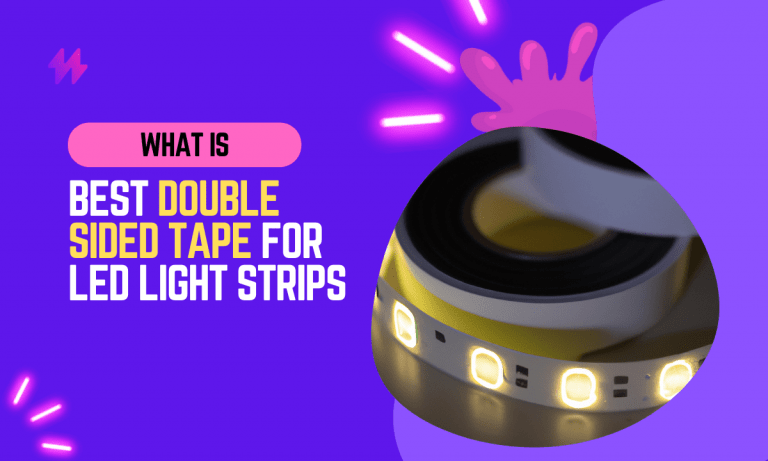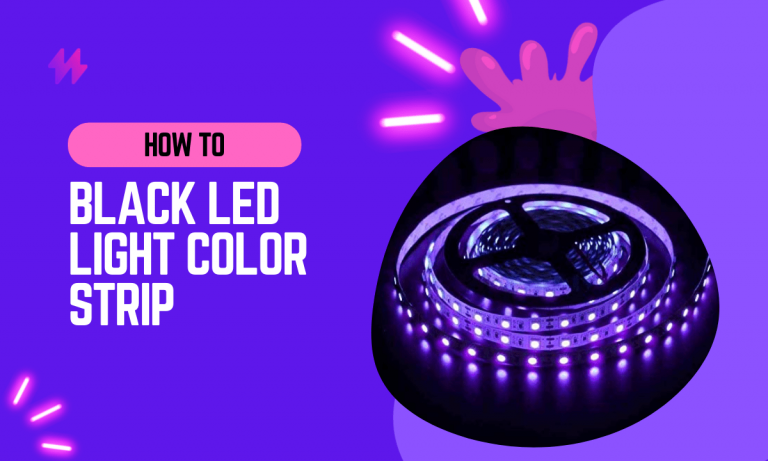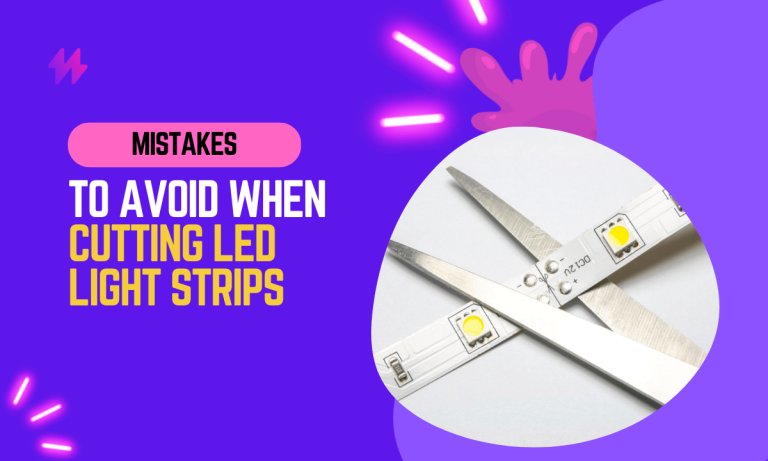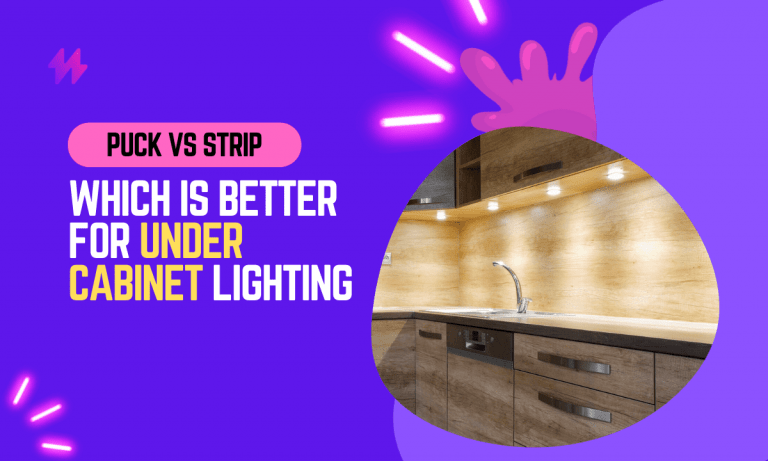How to Dim LED Strip Lights with Confidence?
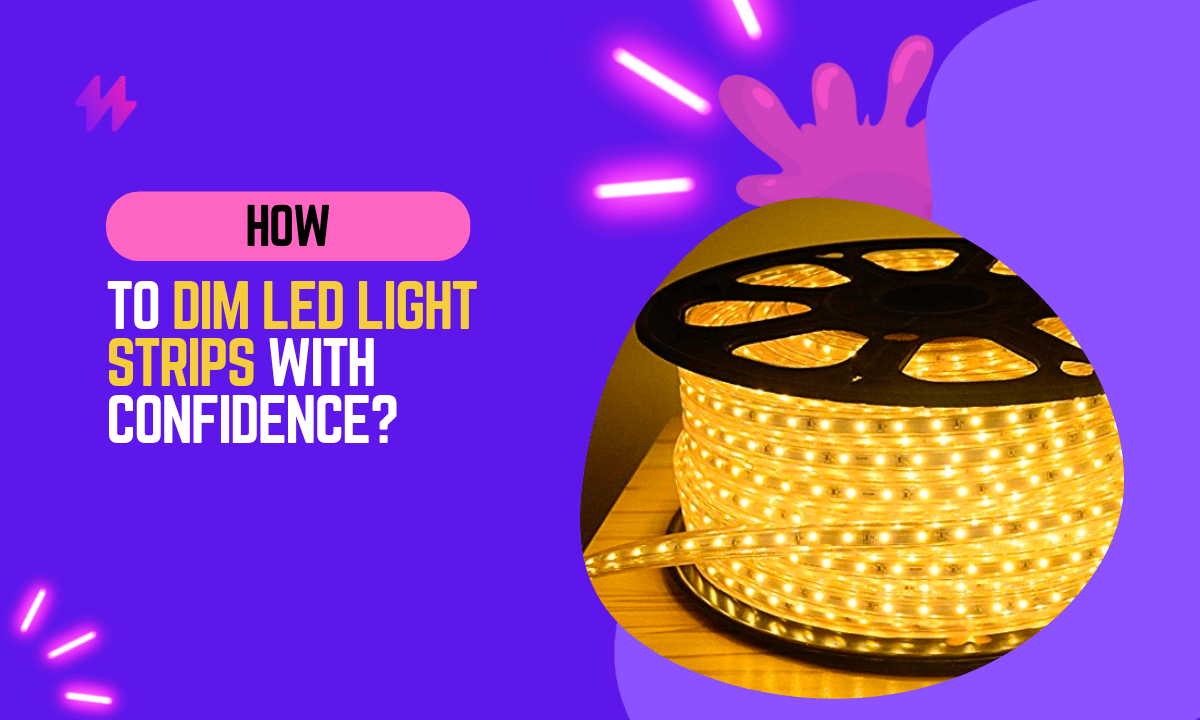
LED strip lights are a popular choice for lighting under cabinets, behind TVs, and in other applications. However, many people find that the lights are too bright, even on the lowest setting. If you’re one of those people, you’re in luck. In this article, I’ll show you how to dim LED strip lights using a variety of methods.
In this article, I’ll share my experience with you so that you can dim LED strip lights with confidence.
There are a few different ways to dim LED strip lights. The best method for you will depend on your specific needs and the type of lights you have. I’ll discuss each method in detail below, so you can choose the one that’s right for you.
Dimming LED strip lights effectively can enhance the ambiance of any room, making it ideal for accent lighting. Whether you prefer soft lighting for a cozy atmosphere or brighter task lighting, understanding how to dim LED strip lights with confidence will allow you to customize your space beautifully.
How to Dim LED Strip Lights with Confidence: Is it Possible to Dim LED Lights?
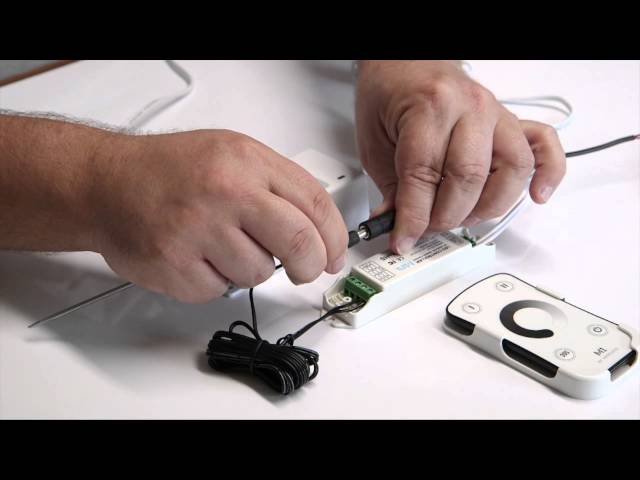
The answer is yes, it is possible to dim LED strip lights. However, the process is not as simple as it is with traditional incandescent lights. In this guide, we’ll show you how to dim LED strip lights using a variety of methods.
When it comes to enhancing your home with mood lighting, LED strip lights offer a combination of versatility and efficiency that traditional incandescent lightbulbs cannot match. By effectively utilizing a dimming option, homeowners can enjoy customizable lighting effects that adjust to their needs, whether they seek bright task lights or soft, low lights that convey warmth and comfort. Dimming LED strip lights not only allows for beautiful ambiance but also supports energy efficiency, making it a sought-after choice in the led lighting industry.
Method 1: How to Dim LED Strip Lights with a Dimmer Switch
The easiest way to dim LED strip lights is to use a dimmer switch. Dimmer switches work by reducing the amount of power that flows to the LED strip lights. This causes the lights to dim gradually.
To use a dimmer switch, simply connect it to the power source for your LED strip lights. Then, turn on the dimmer switch and adjust the setting to the desired brightness.
Dimmer switches are available in a variety of styles, so you can find one that fits your needs. Some dimmer switches even have built-in timers, so you can set them to turn on and off automatically.
To achieve the best dimming effect with LED strip lights, you can explore various dimmable drivers that suit your specific installation needs. Implementing a smart lighting system can further enhance your experience, allowing for seamless control over light intensity, colors, and even scheduling.
Using a Controller: A Method to Dim LED Strip Lights
Another way to dim LED strip lights is to use a controller. Controllers are small devices that connect to the LED strip lights and allow you to control their brightness, color, and other features.
To use a controller, simply connect it to the power source for your LED strip lights and then connect the LED strip lights to the controller. Once the controller is connected, you can use the controls to dim the lights to the desired brightness.
Controllers are more versatile than dimmer switches, as they allow you to control a wider range of features. However, they can also be more expensive.
To enhance the customization of your lighting experience, consider using controllers specifically designed for LED strip installations. These controllers not only allow you to adjust the LED brightness but also provide the capability to create stunning effects by adjusting strip light colors according to your preferences.
Method 3: Dimming LED Strip Lights with a Smartphone App
If you have a smartphone, you can use a smartphone app to dim your LED strip lights. There are many different apps available, so you can find one that fits your needs.
To use a smartphone app, simply download the app to your phone and then connect it to your LED strip lights. Once the app is connected, you can use it to control the brightness of the lights.
Smartphone apps are a convenient way to dim LED strip lights, as they allow you to control the lights from anywhere in the world. However, they can be more expensive than dimmer switches or controllers.
Also read: How To Sync LED Strip With TV For Backlight?
Using a smartphone app to control your LED strip lights offers unparalleled convenience, as it allows you to adjust the light emitting diodes’ brightness from virtually anywhere. By exploring various models, you can find options that not only dim LEDs effectively but also enhance your overall lighting experience with features designed for mood and energy efficiency.
Method 4: Dimming LED Strip Lights with a Home Automation System
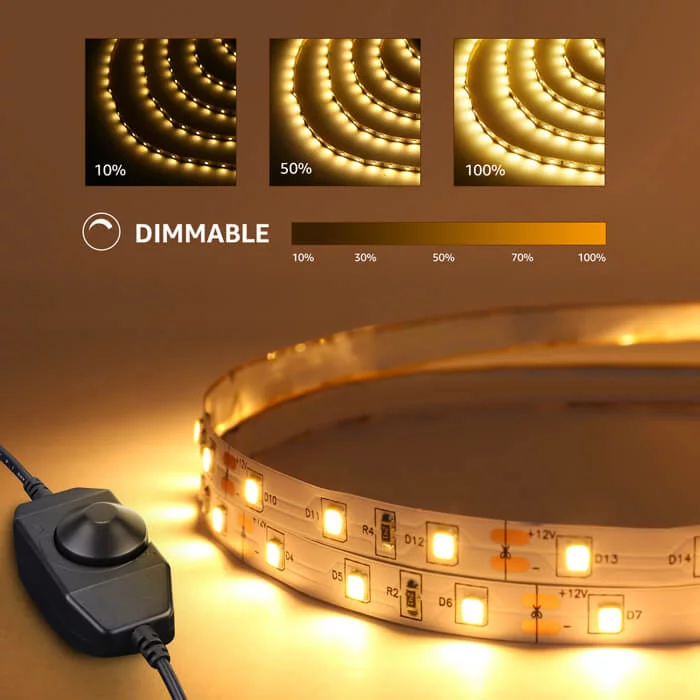
If you have a home automation system, you can use it to dim your LED strip lights. Home automation systems allow you to control a variety of different devices in your home, including your LED strip lights.
To use a home automation system, simply connect it to your LED strip lights and then create a scene that dims the lights to the desired brightness. Once the scene is created, you can activate it with a single button press.
Home automation systems are a great way to control your LED strip lights, as they allow you to create custom scenes and automate the dimming process. However, they can be more expensive than dimmer switches, controllers, and smartphone apps.
To enhance your home’s lighting with effective dimming options, consider incorporating smart lights and strip light controllers that make adjustments easy and precise. By utilizing dimmable power supplies alongside your LED diodes, you can ensure a flicker-free experience that tailors the brightness and color tone to suit your mood perfectly.
Technique 5: Employing a PWM Signal for Dimming LED Strip Lights
If you’re comfortable with electronics, you can dim LED strip lights using a PWM signal. PWM stands for pulse-width modulation, and it’s a technique that can be used to control the brightness of an LED by varying the width of the electrical pulses that are sent to it.
To dim LED strip lights using a PWM signal, you’ll need a PWM controller, an LED driver, and some electrical wiring. The PWM controller will generate the PWM signal, the LED driver will convert the PWM signal into a voltage that can be used to drive the LED strip lights, and the electrical wiring will connect the PWM controller and the LED driver to the LED strip lights.
PWM is a powerful technique that can be used to dim LED strip lights with a high degree of precision. However, it can be more difficult to set up than the other methods listed in this guide.
Also read: How to Make LED Light Strips Sticky Again?
Dimming LED strip lights with a PWM controller is a highly effective method to achieve precise control over the lights’ brightness, enhancing your space with customized lighting solutions. By adjusting the dimming signal sent to the LED emitters, you can create low lights that convey a warm atmosphere or ramp up the strip light brightness to illuminate spaces more effectively.
Method 6: Dimming LED Strip Lights with a Resistor
You can also dim LED strip lights by using a resistor. A resistor is a device that resists the flow of electricity and can be used to reduce the amount of current that flows to the LED strip lights.
To use a resistor to dim LED strip lights, simply connect the resistor in series with the LED strip lights. The size of the resistor will determine the amount of current that flows to the LED strip lights, and therefore the brightness of the lights.
Resistors are a simple and inexpensive way to dim LED strip lights. However, they can only be used to dim LED strip lights that have a constant current driver.
Dimming LED strip lights with a resistor is a straightforward approach that allows for effective control of the LED strip brightness. It’s important to consider that for accurate dimming, selecting the right resistor size is crucial to avoid issues like lights flickering or not achieving the desired luminosity. Utilizing various techniques can enhance the functionality of your lighting system, ensuring that the lights convey energy and create the perfect atmosphere. Implementing well-chosen dimmable lights in your setup will help achieve the real brightness you desire across different spaces in your home.
FAQs on Dimming LED Strip Lights: Solutions and Safety Considerations
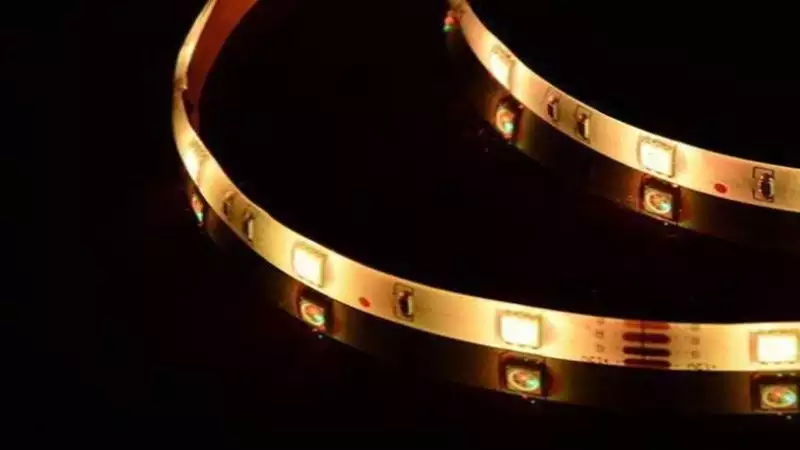
Below you can find some of the widely asked questions on how to dim LED strip lights.
Dimming LED strip lights can elevate your living space, offering the flexibility to switch between soft, low lights that convey warmth and brighter, energy-conveying settings. By leveraging innovative controllers and dimmable options, homeowners have the ability to fine-tune their lighting to achieve the desired ambiance in any room, effectively utilizing ceiling lamps and strip light output for maximum brightness.
How to Effectively Dim LED Strip Lights: A Comprehensive Guide on Methods and Safety
There are a few different ways to dim LED strip lights. The most common way is to use a dimmer switch.
When it comes to utilizing a dimming switch for LED strip lights, there are various options available that can enhance your experience. The use of dimmable lights, along with the right dimming techniques, allows for an incredible range of control over your lighting, whether you want warm light output for a relaxing night or full brightness for tasks that require more focused lighting.
- Dimmer switches work by reducing the amount of power that is supplied to the LED strip lights, which in turn reduces the brightness.
- A potentiometer is a variable resistor that can be used to control the amount of current that flows through the LED strip lights. By turning the potentiometer, you can increase or decrease the brightness of the LED strip lights.
- Software controllers allow you to control the brightness of the LED strip lights from a remote location. This can be useful if you want to dim the lights from your smartphone or tablet.
Understanding the Difference Between a Dimmer Switch and a Potentiometer: Which is Best for Your LED Strip Lights?
A dimmer switch and a potentiometer are both devices that can be used to control the brightness of LED strip lights. However, there are some key differences between the two devices.
Dimmer switches are typically used to control the brightness of a single light fixture. Potentometers, on the other hand, can be used to control the brightness of multiple light fixtures.
Additionally, dimmer switches are typically wired directly to the light fixture, while potentiometers are typically wired to a controller.
Dimming LED strip lights allows homeowners to create customized spaces that highlight the beauty of their interiors. By utilizing dimmable power supplies and controllers, it’s possible to adjust the LED strip brightness while ensuring that lights convey energy and warmth when needed.
Determining the Best Method to Dim LED Strip Lights: A Comprehensive Guide
The best way to dim LED strip lights depends on your specific needs. If you only need to dim a single light fixture, then a dimmer switch is a good option. If you need to dim multiple light fixtures, then a potentiometer or software controller is a better option.
Dimming LED strip lights can greatly improve the aesthetic of various environments, especially in spaces designed for relaxation or entertainment. With the use of innovative led strip controllers and wall dimmers, you can achieve the perfect lighting balance between low lights that convey warmth and bright settings that enhance clarity and energy in your home.
Assessing the Safety Risks of Dimming LED Strip Lights: Key Considerations
There are a few safety risks associated with dimming LED strip lights. First, if you use a dimmer switch that is not compatible with LED strip lights, you could damage the lights. Second, if you dim the lights too much, you could create a fire hazard.
To avoid these risks, it is important to use a dimmer switch that is specifically designed for LED strip lights. Additionally, it would be best if you never dim the lights below 50% brightness.
When dimming LED strip lights, it is crucial to ensure you have the right dimmable power supply to prevent issues such as lights flickering or fire hazards. Using an appropriate strip dimmer designed for different led strip types enables seamless adjustments to both brightness and color, creating an ideal environment for any room’s unique needs.
Where to Purchase Dimmers for LED Strip Lights: Your Ultimate Guide
Dimmers for LED strip lights can be purchased online or at home improvement stores. When shopping for a dimmer, be sure to choose one that is specifically designed for LED strip lights.
You may also like: How to Remove LED Strip Light Adhesive?
When selecting dimmers for LED strip lights, it’s crucial to ensure that the model you choose is compatible with the specific type of light installation you have, whether it’s standard or addressable strip light. The right dimmable power supply paired with a PWM dimmer can facilitate the transition between low lights that convey warmth and the max brightness needed for office spaces or task lighting.
Final Thoughts on Dimming LED Strip Lights: Methods and Safety Tips
In conclusion, mastering the art of dimming LED strip lights is essential for creating versatile lighting environments that can adapt to various moods and settings. The ability to adjust the brightness of LED strip lights not only enhances the aesthetic appeal of a space but also contributes to energy efficiency and extends the lifespan of the LEDs. To dim LED strip lights effectively, it is crucial to ensure that the lighting setup includes a compatible dimmer switch that matches the specifications of the LED strips. This compatibility prevents issues such as flickering and uneven dimming, which can detract from the ambiance and potentially harm the LED circuitry. Furthermore, understanding the type of dimmer (PWM or analog), and ensuring it aligns with the strip’s requirements, will facilitate smooth operation and reliable performance.
Moreover, the practical application of dimming LED strip lights involves more than just installing the right hardware. It requires thoughtful consideration of the lighting design to maximize the impact of the dimming capabilities. For instance, integrating dimmers with smart home systems can allow for automated adjustments based on the time of day or the presence of people in the room, thereby enhancing both convenience and energy efficiency. Additionally, experimenting with different brightness levels during the installation process can help in determining the optimal settings for various activities, whether it’s bright illumination for task-focused areas or softer lighting for relaxing environments. By thoroughly understanding both the technical and creative aspects of dimming LED strip lights, users can confidently enhance their living or workspaces with lighting that is not only functional but also dynamically tailored to their needs.
How To Dim LED Strip Lights With Confidence | Understanding LED Strip Light Dimming
Understanding how to dim LED strip lights with confidence involves grasping the technical nuances behind LED dimming technologies. Unlike traditional incandescent bulbs that rely on voltage adjustment to achieve dimming, LED bulbs function through complex electrical signals. The dimming performance often hinges on the compatibility between dimmers, such as triac dimmers or PWM dimmers, and the specific LED strip lights used. Single-color strip lights might respond differently to standard wall dimmers compared to RGBW strip lights, which can produce gorgeous colors but require more sophisticated control systems. Factors like threshold voltage and non-linear dimming characteristics play a crucial role in how effectively lights dim without flickering. Understanding these dynamics helps ensure that spaces remain brilliantly lit, whether through cabinet lighting or desk lamp fixtures, while achieving the desired ambiance with low lights that convey comfort.
How to Dim LED Strip Lights with Confidence | The Science Behind LED Dimming
Understanding the science behind dimming LED strip lights is essential for achieving a desired ambiance in any space. Dimming technology often draws comparisons to incandescent dimmers and traditional wall dimmers, such as the triac wall dimmer or dimmable power supply options. For a complete strip light experience, low lights convey a soothing atmosphere that can enhance circadian lighting, making environments more comfortable. Individuals can transform their spaces with lights that not only adjust brightness but also maintain color accuracy—whether using white strip lights or colored LED options.
The choice of dimming equipment plays a crucial role in how to dim LED strip lights with confidence. Compatibility is a significant factor; for instance, standard lamp fixtures like e12 lamp fixtures or a-style bulbs require specific dimmer units. Understanding whether a particular strip light is dimmable or not is fundamental to prevent flickering or inconsistent performance from capabilities like 0-10V dimming or triac dimming signals. This is where hitlights expertise comes into play, ensuring that consumers select the right dimmers, such as wall dimmers designed specifically for office LEDs or decorative bulb-style applications. With the right equipment, users can easily control their lighting and create spaces that feel brighter and more inviting.
Factors Influencing Dimming Performance
The quality of dimming performance can significantly vary based on the components used in the setup. For example, fluorescent lamps may not achieve the same level of dimming as high-quality LED options. A wall-dimmer approach can work effectively, but compatibility between the dimmable power supply and the individual strip light is crucial. Understanding how to dim LED strip lights with confidence involves knowing whether each part of your lighting setup—like a21 lamps or decorative bulb styles—is dimmable or not. Incompatible components can lead to flickering or unexpected results during use, impacting the real brightness of the space.
Different dimming technologies also play a role in performance levels. For instance, a 0-10V dimmer can provide smoother transitions compared to standard wall dimmers, especially in larger spaces. This ensures the lights part of your design can seamlessly adjust from bright to dim. Capable hitlights offer built-in dimming options that enhance control, while standard setups may struggle with achieving desired ambiance through linear light displays. Proper testing through photo and video demonstrations can help illuminate any dimmable questions you have, ensuring you find the best approach for your lighting needs.
Selecting the Right Equipment for Dimming
Selecting the right equipment is crucial for achieving the desired effect when exploring how to dim LED strip lights with confidence. A variety of dimmable power supplies are available, which can enhance the flexibility of your lighting setup. Whether you choose a wall dimmer approach or switch-controlled lighting, it’s essential to match the equipment to your specific strip lights. For instance, white LEDs can create environments that make spaces brighter or cozier depending on the dimming capabilities of whichever strip light you select. Important to note is the compatibility between dimmable/not dimmable power supplies to avoid potential flickering or damage. HitLights offers various options that cater to different lighting needs, including those transitioning from traditional 4-ft fluorescent lamps to more modern light linear solutions. Finding the right mix of equipment can significantly affect the comfort of your eyes when adjusting brightness levels.
Types of Dimming Switches and Controllers
Choosing the right dimming switch or controller is essential for effective lighting control. A well-matched dimming solution allows you to adjust the brightness of your LED strip lights effortlessly. This can include traditional dimmer switches or advanced smart controllers. Understanding how to dim LED strip lights with confidence starts with selecting compatible equipment that can handle the specific voltage and wattage of your setup. For instance, using a dimmable power supply ensures that the lights respond correctly to dimming instructions, providing a smooth transition between brightness levels.
Different types of dimming technologies are available, each offering unique benefits. Leading-edge dimmers reduce the voltage to the lights, while trailing-edge dimmers provide more refined control with less flickering. Some smart controllers offer programmable settings that allow for customized lighting scenes. Knowing how to dim LED strip lights with confidence involves selecting the appropriate dimmable power supplies that align with your specific LED strip requirements. This ensures optimal performance and longevity of your lighting system.
Compatibility of LED Strip Lights with Dimmers
Understanding the compatibility between LED strip lights and dimmers is crucial for achieving the desired lighting effect. The right dimming solution can enhance mood and functionality in any space. Ensure that the LED strip lights you choose are designed to work with dimmable power supplies. Proper matching between these components allows for smoother dimming performance and prevents flickering. Knowing how to dim LED strip lights with confidence requires a thorough assessment of the equipment involved.
Using dimmable power supplies is essential for proper operation. These supplies allow LED strip lights to adjust brightness without compromising performance. Not all LED lights are inherently dimmable, which emphasizes the need for compatible dimming technology. Learning how to dim LED strip lights with confidence involves selecting both dimmable power supplies and switches that support the specific type of LED lighting. This synergy ensures optimal performance and longevity of your lighting setup.


